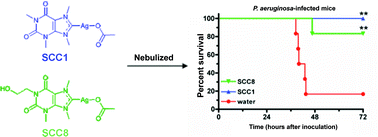A theobromine derived silverN-heterocyclic carbene: synthesis, characterization, and antimicrobial efficacy studies on cystic fibrosis relevant pathogens†
Abstract
The increasing incidence of multidrug-resistant (

- This article is part of the themed collection: N-heterocyclic carbenes

 Please wait while we load your content...
Please wait while we load your content...